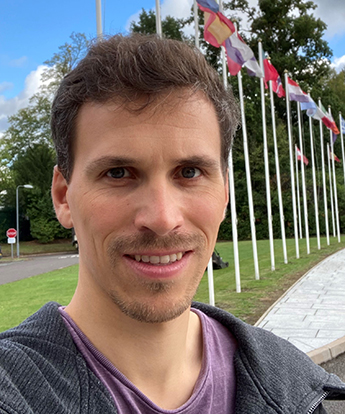On 1 October 2020, Tobias Becker joined ECMWF for a period of two years after being awarded a Feodor Lynen Research Fellowship by the Alexander von Humboldt Foundation (https://www.humboldt-foundation.de/en/). He is a guest of Irina Sandu, an ex‑Humboldt fellow at the Max Planck Institute for Meteorology, after having written a successful proposal on the interaction of deep convection with its environment in global km‑scale simulations (1–4 km). The prestigious Humboldt Foundation supports research in Germany by promoting academic cooperation between excellent scientists and scholars from Germany and from abroad. One of their initiatives, the Feodor Lynen Research Fellowship, funds young post-doctoral scientists from Germany to carry out a research project abroad as a guest of one of more than 30,000 Humboldt Foundation alumni worldwide – the Humboldtians.
Deep convective systems
Tobias will work with Peter Bechtold, Irina Sandu, Nils Wedi and others to improve the representation of moist physics, and in particular of deep convective systems, in the Integrated Forecasting System (IFS). He will specifically look at km-scale resolutions that will be used for ensemble forecasting at ECMWF in the second half of this decade. This work will build on the ideas developed during Tobias’ visit at ECMWF in the summer of 2019, while he was a post-doc at the Max Planck Institute for Meteorology.
During his visit in summer 2019, Tobias looked at the intensity and propagation of deep convective systems over Africa. He used IFS simulations with 4 km resolution, with and without a parametrization for deep convection, and identified shortcomings in both model setups. While rain events are too strong with explicit deep convection, they are generally too weak and too frequent with parametrized deep convection. This is partly because convective inhibition (CIN) barely increases after a rain event. With parametrized deep convection, deep convective systems also often propagate eastward over West Africa. This behaviour is much less common in observations, where the great majority of deep convective systems propagate westward. These results, summarized in a recent ECMWF science blog (see https://bit.ly/2VYf7xb), led to the idea to include the total advective moisture convergence in the convective instability closure. With this revised parametrization, the characteristics of deep convection are in between the two initially studied model versions: deep convective systems get more intense and propagate more realistically westward over West Africa. This revision to the deep convective parametrization is now part of the major moist physics update in an upcoming IFS cycle and was discussed in more detail in the Summer 2020 ECMWF Newsletter.

Open questions
Building on this work during his Alexander von Humboldt fellowship, Tobias will use IFS simulations at 1 km resolution as a virtual laboratory (see the recent ECMWF science blog entry https://bit.ly/3gr7wkg). He will investigate how misrepresentations in deep convection feed back both on the local environment and on the large-scale circulation in IFS simulations at coarser resolution (4 to 9 km). His work will focus on three research questions:
- What are the reasons for the overestimated intensity of precipitation in km‑scale simulations with explicit deep convection, and how can this be linked to misrepresentations in convective organisation and in the interaction of deep convection with its environment?
- To what extent are systematic errors in the propagation of mesoscale convective systems and the diurnal cycle a result of misrepresented interactions between deep convection and the environment at 4 to 9 km resolution?
- What changes to moist physics parametrizations are needed to better represent deep convection at future resolutions used for ensemble forecasts at ECMWF (1–4 km)?

